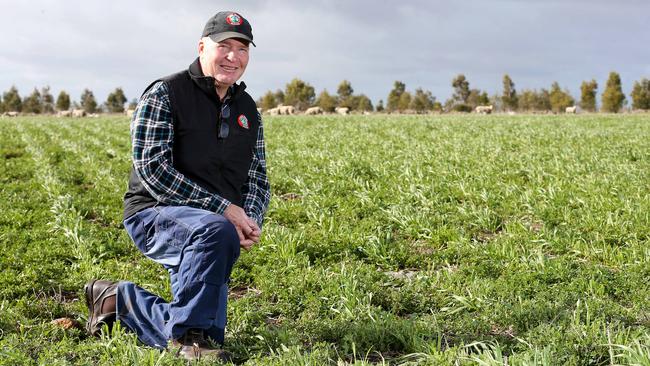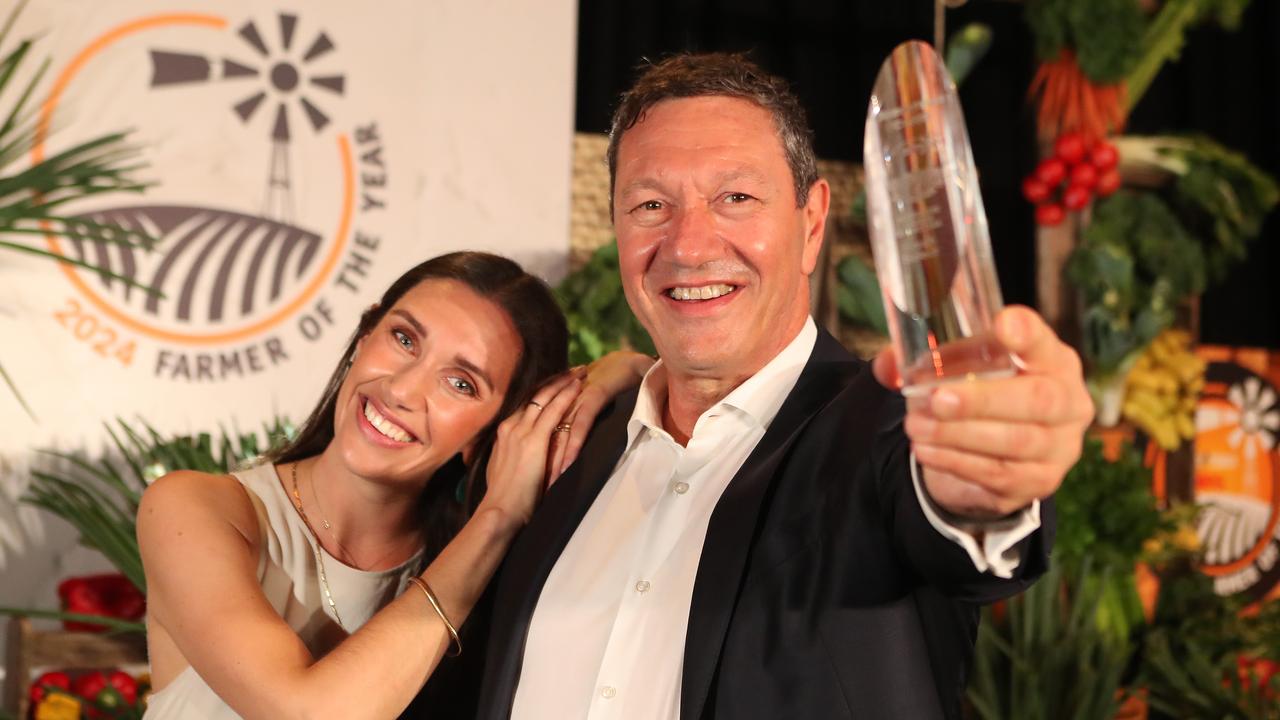Sheep farming at Shelburn, Shelford: Matching data and old-school skills
USE of new technology is like removing a blindfold for sheep farming, writes SARAH HUDSON.

TECHNOLOGY has revolutionised the way Gordon Brown farms. For five years, the 61-year-old, who has managed properties around Australia his whole life, has held the reins of the 1215ha property, Shelburn, at Shelford, west of Geelong.
The property, which is owned by a US-based Chinese company and was formerly home to an Angus beef enterprise, runs a self-replacing flock of 2200 composite ewes alongside 300ha of cropping. The aim is to increase ewe numbers to 4000 in the next three years.
GORDON BROWN
SHELFORD
MANAGES the 1215ha Shelburn property
RUNS 2200 composite ewes alongside 300ha of crops
HAS incorporated technology into management program
A lifetime of knowledge influences Gordon’s management decisions, but he has also adopted new technologies, including being part of a pilot project using electronic identification tags and Pedigree Matchmaker (which monitors ewe parenting behaviour), alongside Tru-Test scanners and three-way drafting machines. He is also working with his meat processor to identify premium carcasses, based on ID technology.
“This technology has changed the way we farm,” Gordon said. “In the past we used to farm blindly, making decisions based on guesses, but now we’ve taken the blindfolds off, and with the data from this technology, we can make accurate on-farm decisions to produce an elite composite commercial breeding flock.”
In combining old-school farming knowledge with new technologies, Gordon said the starting point was genetics. Maternal rams are sourced from two bloodlines — Highlanders from Focus Genetics Australia, imported from New Zealand, and Lambpro from Holbrook in NSW — aiming for good fertility, growth rates and lamb size for ease of birth. Terminal rams are bought from Gemini White Suffolk stud.
CALM CONDITIONS
GORDON aims for ewes to have a condition score of 3.5-4 and give birth to 4.5-5kg lambs. Joining is on February 22 for a July-August lambing, his preferred season, but that carries risk.
“A lot of my years have been working on properties in NSW and central Queensland and this climate is a lot tougher, the wind and rain are bitter,” Gordon said. “It’s testing and I want to adapt to these conditions. I take it as a challenge. I don’t like things to beat me.”
For this reason his pasture and crops are imperative.
When he first came to the property almost six years ago weeds were a problem. To reduce the weed burden and to establish strong pastures, Gordon prepares paddocks by sowing crops: the majority is oats (yielding four tonnes/ha); but also 20ha of lupins (2.5 tonnes/ha) and 90ha of red wheat, a dual-purpose crop for either grazing or grain, which yields five tonnes/ha. “The crop depends on the weed problem I’m chasing. If it’s barley grass — which can be a problem with the seeds getting into lambs’ eyes — I plant wheat.”
Following those crops, Gordon has been renovating up to 70ha/year of pastures with clover, fescue, cocksfoot, and phalaris, but his preference is lucerne. “After managing properties with different climates and soils lucerne is my favourite. I’ve had great success with it.”
Once lucerne is established, Gordon then uses a disc seeder to sow oats, planted in 20-inch or 50cm row spacings.
He said the oats served a dual purpose: in winter lucerne alone is not enough to get good growth rates, but also the oats provide protection for lambs from harsh winter conditions.
“I’m getting phenomenal growth rates and very good protection,” he said.
WET APPETITE
SHELFORD receives an average annual rainfall of 500mm and in past dry years Gordon has needed to use supplementary feeds from September to July.
But generally he gives small amounts of supplementary feed of lupins at joining to rams; and of lupins and oats to ewes at joining and in the following months.
Gordon has long kept detailed records on the flock but four years ago — on the advice of his local Achieve Ag Solutions representative Nathan Scott — he joined a trial, run by Agriculture Victoria.
All lambs at the time of marking are given an EID tag on their ear.
An area in a paddock has been fenced off as a watering point — with a lick as an attractant — which is where ewes and lambs pass the Pedigree Matchmaker, which records ewe-lamb relationships.
Lambs are then weighed and Nathan downloads and analyses the data for Gordon, who then uses a Tru-Test scanner and three-way drafting machine to segregate sheep based on performance.
Last year Gordon’s best ewe mob recorded 214 per cent scanned in lamb for 185 per cent weaned lambs.
“We can isolate the underperforming ewes and join elite ewes to maternal sires to keep their progeny and breed from them.”
Lambs straight off their mothers are sold at 23-24kg carcass weight to the domestic market.
With the trial now ending, so convinced is Gordon of its merits he’s buying government-subsidised tags and Pedigree Matchmaker.
The next step — hopefully later this year — is to receive EID-linked automated feedback from the abattoir on carcass attributes.
“We will be able to identify the premium carcass and get feedback from the end product,” he said.
“This kind of technology would have been unheard of in my earlier years in farm management. It has put us in a whole different category.”


